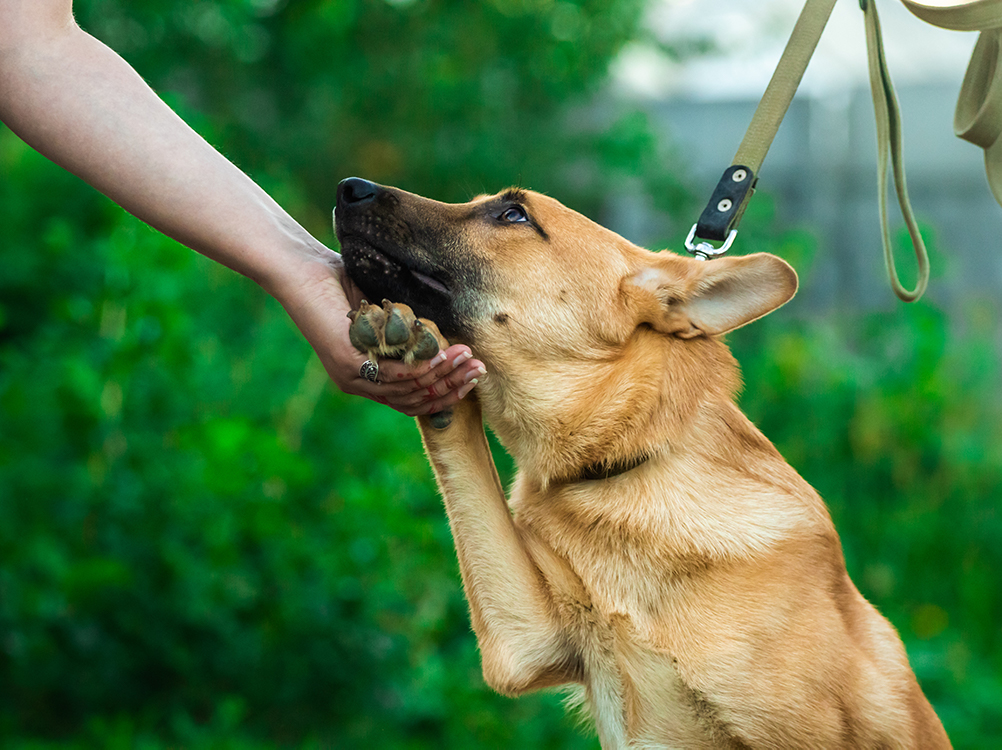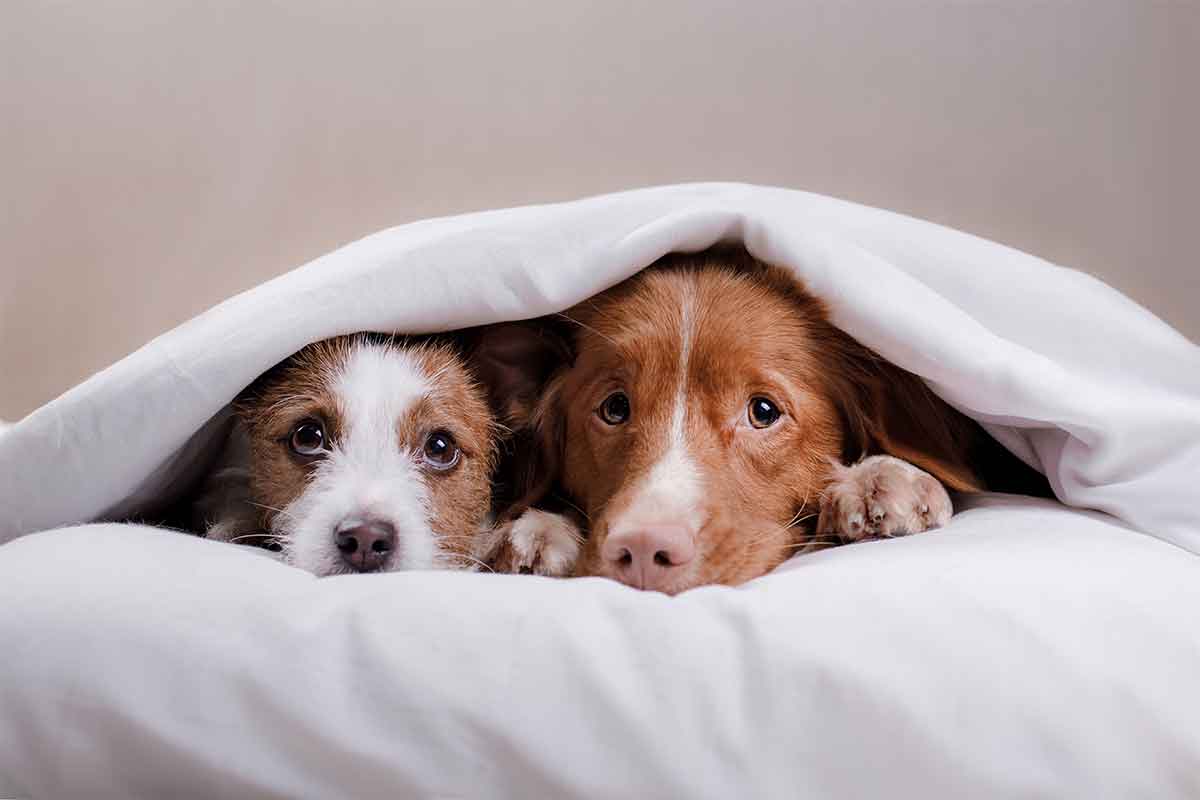Dogs are brilliant animals capable of experiencing a wide range of emotions, including fear and anxiety. Like humans, dogs can become anxious or fearful when exposed to new or unfamiliar situations. This can include loud noises, strange people or animals, and unfamiliar environments. In addition, dogs may also become anxious or fearful due to past traumatic experiences or genetic predispositions.

When a dog is experiencing fear or anxiety, it may exhibit a variety of different behaviors. This can include trembling, excessive panting, drooling, pacing, or hiding. In some cases, dogs may also become aggressive or lash out in response to fear or anxiety. These behaviors can be distressing for the dog and its owner, and addressing them promptly and compassionately is essential.
There are several things that owners can do to help their dogs cope with fear and anxiety. This can include providing a safe and secure environment for the dog, using positive reinforcement training techniques to help build the dog’s confidence, and seeking professional help from a veterinarian or animal behaviorist. With patience, understanding, and a little effort, it is possible to help dogs overcome their fears and live happy, healthy lives.
What are the symptoms of anxiety in your pet?
Dog anxiety symptoms can manifest in several ways, including excessive barking or whining, destructive behavior such as chewing or digging, aggression, pacing, panting, trembling, and attempts to escape or hide. Other signs of anxiety in dogs may include loss of appetite, diarrhea, vomiting, and frequent urination. In some cases, dogs may develop physical symptoms such as hair loss or skin irritations due to excessive licking or biting.
There can be various causes of dog anxiety, including genetics, previous traumatic experiences, lack of socialization, separation anxiety, fear of loud noises or unfamiliar environments, and changes in routine or environment. Additionally, dogs may pick up on their owner’s emotions and become anxious if they sense their owner is stressed or anxious. Identifying the cause of your dog’s anxiety is essential to find an effective treatment plan, which may include behavior modification techniques, medication, or a combination of both.
Understanding walking anxiety
Walking anxiety in dogs is when a dog experiences fear, stress, or concern while on a walk or outside in general. Various factors, such as past traumatic experiences, lack of socialization, or a predisposition to anxiety, can cause this.
Some signs of walking anxiety in dogs include trembling, panting, whining, pacing, pulling on the leash, cowering or hiding, refusing to walk, or attempting to escape. If left unaddressed, walking anxiety in dogs can have adverse effects on their physical and mental health, as well as their quality of life.
If you suspect your dog is experiencing walking anxiety, it is essential to seek guidance from a veterinarian or certified dog behaviorist. They can help you identify the underlying causes of your dog’s anxiety and provide you with practical strategies to manage it, such as behavior modification, desensitization, or medication.
Coping with dog anxiety
Here are some ways to cope with dog anxiety:
- Exercise: Regular exercise can help alleviate anxiety in dogs. Taking your dog for a daily walk or engaging in interactive play can help release pent-up energy and reduce stress.
- Training: Training can help establish a routine and create a structure that can alleviate anxiety. Obedience training can also improve communication and strengthen the bond between you and your dog.
- Provide a Safe Space: Providing your dog with a safe and comfortable space to retreat to can help reduce anxiety. This could be a crate, a cozy bed, or a designated area where your dog can relax and feel secure.
- Calming Aids: Many products can help calm an anxious dog, such as pheromone sprays containing collars and natural supplements like chamomile or valerian root.
- Seek Professional Help: If your dog’s anxiety is severe, consider consulting with a professional dog trainer or veterinarian who can help develop a personalized plan to address your dog’s concerns. Medication may sometimes be necessary to manage your dog’s anxiety.
Remember, every dog is unique; what works for one dog may not work for another. Be patient and persistent, and seek professional help if necessary.

The harms of being an anxious dog owner
Do you know that anxious dog owners intensify fears and anxiety in their dogs? Worried dog owners can inadvertently contribute to their dog’s anxiety in several ways:
- Overprotectiveness: When dog owners are overprotective, they can create an environment where their dogs feel unsafe or vulnerable. This can cause dogs to become anxious and fearful.
- Inconsistent behavior from dog owners: Being overly affectionate one moment and then distant the next can cause dogs to feel confused and anxious.
- Lack of socialization: Dog owners who do not expose their dogs to different environments and situations can inadvertently create anxiety in their dogs when they encounter new experiences.
- Lack of exercise and mental stimulation: Dogs need physical activity and mental stimulation to be healthy and happy. Dog owners who need to provide these essential elements can create a situation in which their dogs become restless and anxious.
- Emotional contagion: Dogs are highly attuned to their owners’ emotions. If an owner is anxious, it can quickly spread to their dog and cause them to become worried.
Take professional help, if needed
It’s vital for dog owners to understand that their behavior and actions can significantly impact their dog’s wellbeing. By being consistent, providing proper exercise and mental stimulation, and socializing their dog, owners can help prevent or alleviate their dog’s anxiety.
With the help of a professional, you can improve your dog’s quality of life and build a stronger bond with your furry friend. A professional can accurately diagnose the anxiety’s root cause and recommend appropriate treatment options. They can also teach you how to modify your dog’s behavior and create a more calming environment for your pet. If you notice any signs of anxiety in your dog, contact the vet as soon as possible. You should never delay these things.
